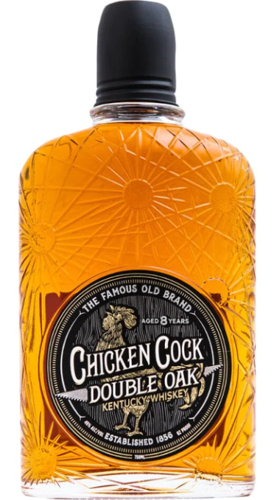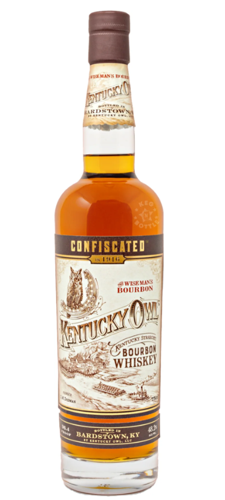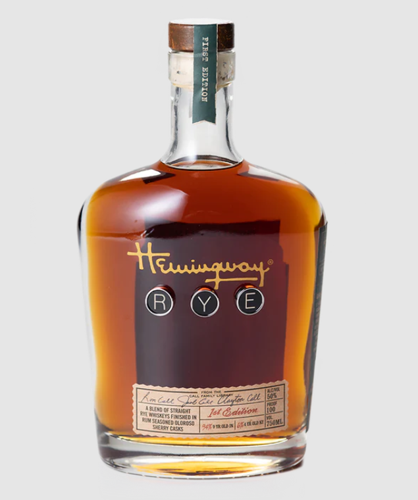
Three fun new whiskeys passed through my tasting glass last week, so here’s what you might want to be seeking out.
The first was a release from Kentucky Owl, the rebirth of a classic brand that was a major distiller pre-Prohibition, and was revived as a blending operation about a decade ago. Kentucky Owl has gained a rabid fan base with their limited releases of mingled whiskeys created by blending aged barrels acquired from various distillery operations.
Their latest release is called Confiscated, and while it’s still pretty pricey at an MSRP of $125 a bottle, it represents a slightly more approachable price point than many of the brand's other products, which can go for $50-$100 more. There’s no age statement on Confiscated, which doesn’t reveal much about its provenance other than all the whiskeys used in the blend must be at least four years old. Word on the street is that all the spirits involved were sourced from Kentucky.
The result is a nicely balanced whiskey with subtle notes of oak and citrus on the nose. Bottled at 96.4 proof, the initial sip is only mildly hot, but not so strong that you couldn’t use it as the base to a pretty pricey home cocktail. The tannins in the oak tended to dry my palate a bit, but not unpleasantly so, but wood is the dominant flavor over the vanillins released by the barrel. The finish dissipated the oak, leaving the spicy caramel flavors that lingered quite nicely.
For a bottle that demonstrates the considerable talents of the blenders at Kentucky Owl, Confiscated is a nice entry point to the brand that can at least save you a few bucks over the rest of their product line.

If it seems like I’ve been writing a lot about Chicken Cock here lately, it’s not just because I’m a fan of puerile humor. I’ve genuinely been impressed by some of the new products they have released lately, and they are similar to Kentucky Owl in that they are working to revive a classic brand as a non-distilling producer. Chicken Cock is transparent about partnering with Bardstown Distilling Co. to make their spirits, but they control the aging and blending process — very important elements of making great bourbon.
Except their Double Oak Kentucky Whiskey isn’t a bourbon — they have intentionally chosen to break the rules of bourbon. Other double-oaked products from Old Forester and Woodford Reserve satisfy the regulations for bourbondom by aging the spirit in new charred oak barrels before dumping the liquid after the effect of the wood has begun to peter out before refilling other new charred oak barrels with the already-aged whiskey.
This process gives the whiskey a double shot of oak, really emphasizing the woody notes that barrels contribute to spirits. So if you’re a fan of wood, these are right in your wheelhouse.
Chicken Cock prefers to showcase the grain over the barrel, so they have selected unaged whiskeys from BBC that they age more subtly in barrels that have already been used for previous bourbon runs. After seven years slowly extracting wood elements from the old barrels, Chicken Cock Double Oak gets a final kick of wood from 18 months in new barrels.
Before I get into the effects of this technique, it’s important to note that this process was not completely born of creative experimentation; it came, in part, out of necessity. Back around 2012-13, there was a major shortage of the oak that cooperages used to make whiskey barrels. And extremely wet winter left the wood used for staves too wet to use instead of drying out as usual in the woodyards so that they would be flexible enough to bend into staves and non-porous enough to keep from leaking valuable whiskey. This corresponded with the big boom in bourbon popularity to make barrels darned scarce to source. There were definitely a few years when you couldn’t find Jack Daniel’s barrels in the garden section of Home Depot that you could convert into planters.
As a new operation, Chicken Cock made the decision to eschew bourbon designation and start out with used barrels, much like how scotch distilleries utilize used American whiskey barrels to age their products. The result is actually quite interesting — a 92-proof Kentucky whiskey that definitely still features oaky characters, but in a much more subtle way than other double oaks. If you’re a fan of Manhattans made with bourbon, I think this would be a fantastic choice, as the chocolate and berry notes play well with vermouth and bitters, though most snifter sippers would probably prefer more wood and higher proof. That’s OK, there are plenty of great options for that.
Retailing for around $100 a bottle, this is pretty much in line with lots of 8-year-old whiskeys, although you probably should use an asterisk with that age statement. It’s definitely a novel approach to whiskey-making worth checking out.

The third whiskey I’ve enjoyed recently is a new rye from Hemingway Whiskey Co. This is a big deal because their first rye release never got out of the state of Kentucky, selling out in a matter of a few days. Seventh- and eighth-generation distillers Dan and Jacob Call came together to create a blend of aged ryes, which they finished in Oloroso sherry casks. Although I never got to try it, all accounts were that it was spectacular.
This second release of Hemingway First Edition Rye Whiskey will make at least a fleeting appearance in local liquor stores, packaged in a clever bottle adorned with Hemingway’s signature and the letters R-Y-E spelled out on typewriter keys affixed to the glass. It’s definitely worth the effort to search it out.
The rye exhibits the winter spices generally associated with the grain, but the strong elements of the sherry that remained in the wood of the finishing casks complement the caramel and cinnamon of the original spirit. Almost immediately after the first sip, the flavors of dark fruits like sweet cherry along with creamy vanilla are apparent. Unlike some other ryes that lean toward toffee and chocolate, Hemingway is a fruity treat that offers a long finish that invites another sip.
Rare usually means expensive, and this one prices out at around $110 a bottle, making it a high-end treat if you can find it. Good hunting!







